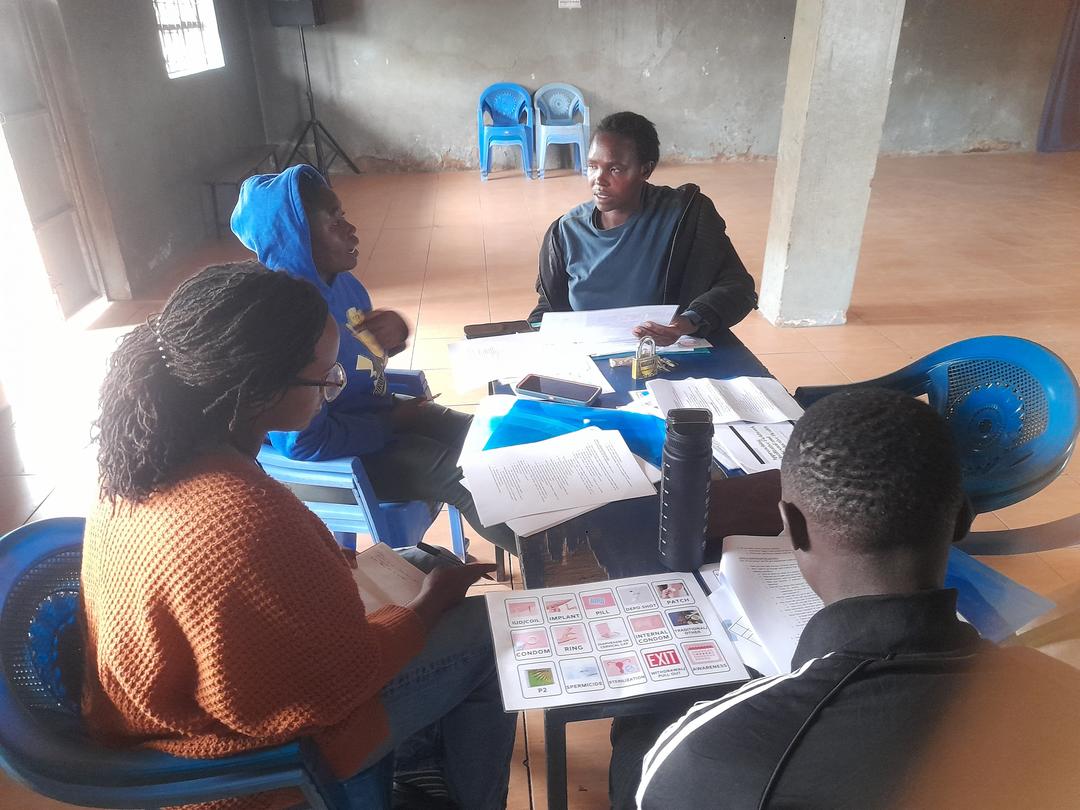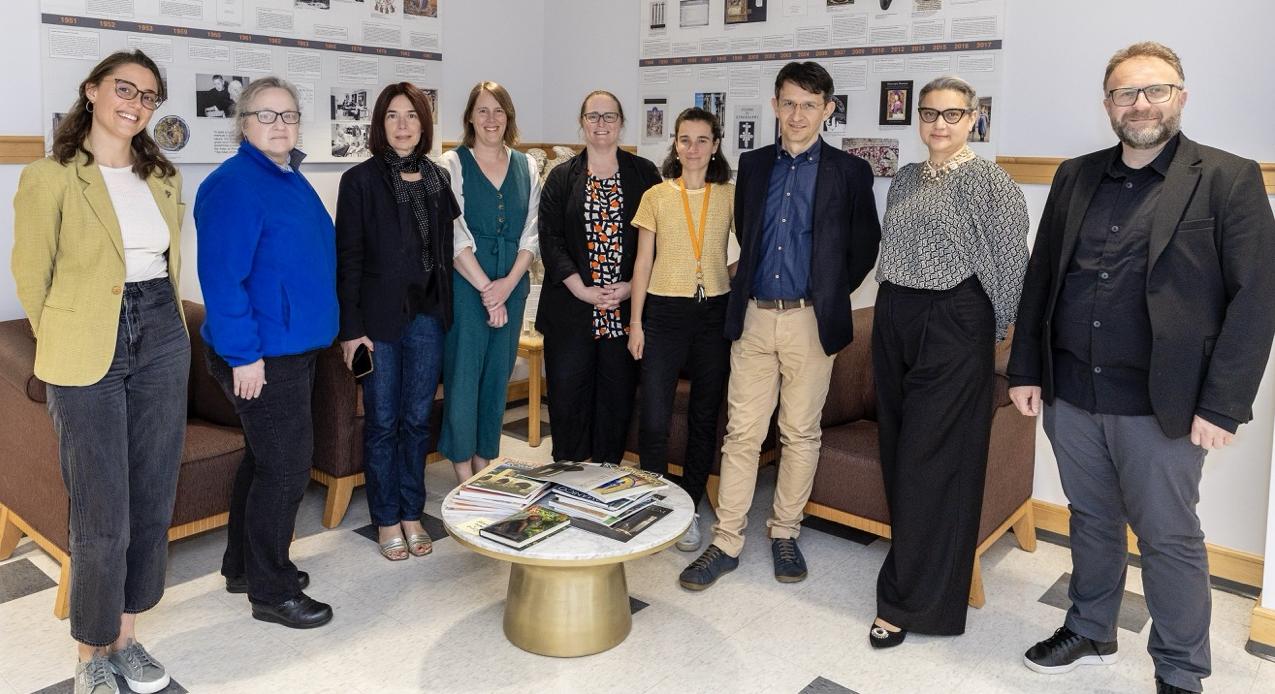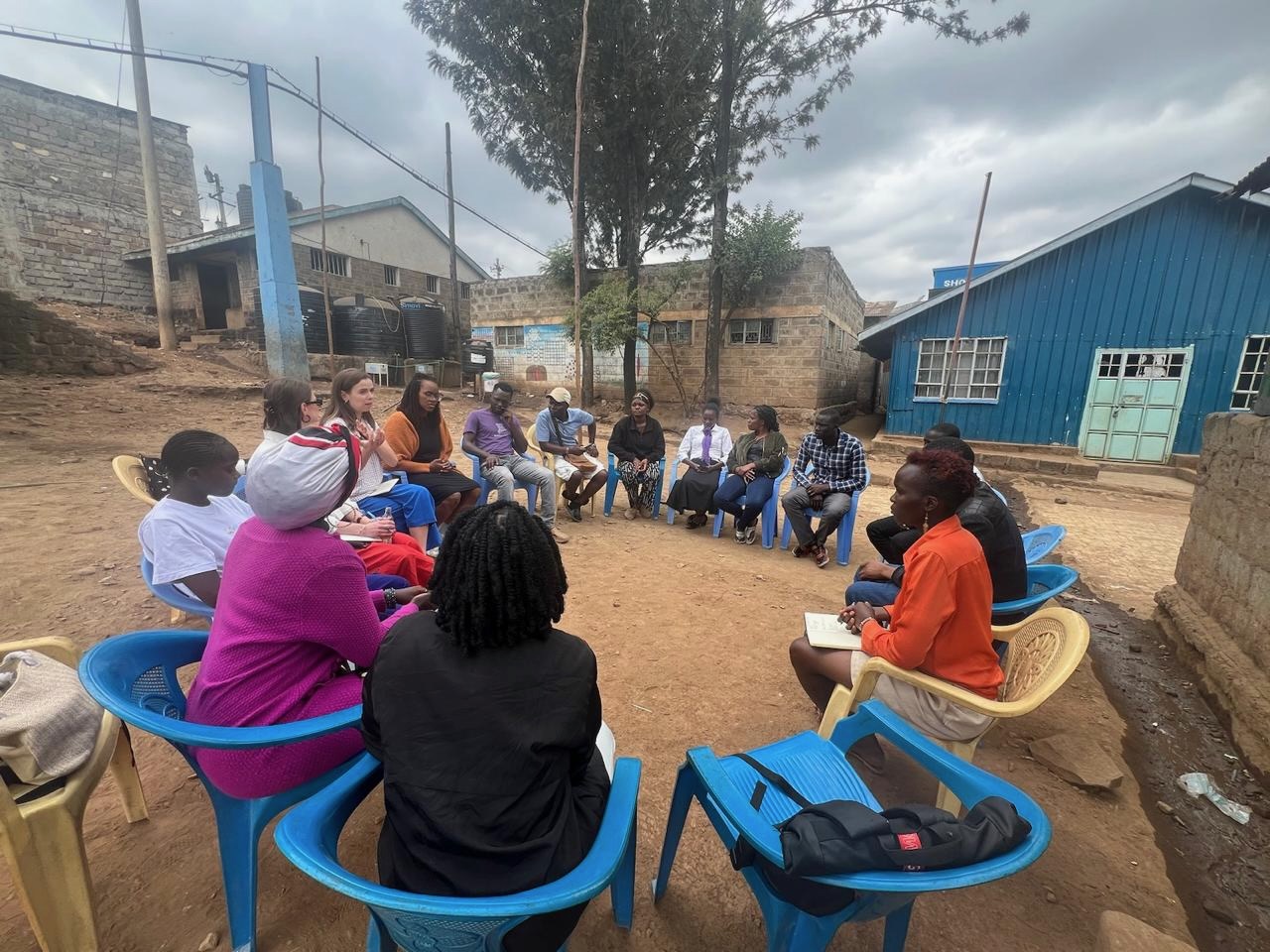Field Work, Real Work: PIIRS’ Wide-Ranging and Evolving Research Initiatives Respond to the World’s Most Urgent Questions

The Princeton Institute for International and Regional Studies (PIIRS) supports bold, collaborative projects that connect faculty research with the wider world. Through competitive grants of up to $75,000 over three years, PIIRS advances innovative work across disciplines and regions — opening archives, deepening fieldwork and building partnerships that expand access to knowledge and resources. By linking Princeton’s scholarship to pressing global challenges, these efforts embody the University’s international mission. The three initiatives featured here, spanning Africa, Latin America and Europe, highlight discoveries that reshape research practices, strengthen partnerships and create lasting, real-world impact.
Connecting Histories: The Princeton and Mount Athos Legacy
Organizers: Julia Gearhart, Director of Visual Resources, and Maria Alessia Rossi, Art History Specialist in the Index of Medieval Art
Region: Europe
Mount Athos, an autonomous region in Greece housing more than 20 Orthodox monasteries, has for millennia influenced spiritual, cultural and artistic realms. Princeton’s Athonite collections in the Department of Art and Archaeology began during an unofficial Princeton expedition to Mount Athos with a Hollywood cinematographer in 1929, which was followed by several expeditions led by Professor Kurt Weitzmann in the 1930s to photograph manuscripts in the monasteries. These collections were expanded by Professor Slobodan Curcič, who obtained an archive of drawings of the restoration of the Serbian monastery of Mount Athos in 1987. In recent years, Princeton University Library and the art museum have carefully selected items that also reflect the unique character of the region, resulting in a campuswide legacy of interest in the Holy Mountain.
 Participants of the May 2025 Mount Athos workshop convene to explore Princeton's remarkable collections.
Participants of the May 2025 Mount Athos workshop convene to explore Princeton's remarkable collections.
While Princeton houses impressive resources on the subject of Mount Athos, such as Byzantine and post-Byzantine manuscripts, engravings, watercolors and photographic prints, accessing the treasures held on the Holy Mountain is not always straightforward. The “Connecting Histories” project aims to rectify this. In May 2025, researchers from around the world specializing in the culture and history of the Greek monasteries of Mount Athos convened to explore Princeton’s remarkable collections and engage in discussions on accessibility, preservation, digitization and potential research topics.
“Athonite collections, both within and beyond the borders of the Holy Mountain, come with a unique set of challenges,” said Rossi. “Throughout the workshop, we learned from one another, brainstormed new collaborative efforts and discussed ways of making [archival materials] more accessible and available.”
Kirstin Ohrt, Communications Specialist, Department of Art and Archaeology, contributed to this reporting.
Kenya Reproductive Health Study
Director: Alyssa Sharkey, lecturer, School of
Public and International Affairs
Region: Africa
Kenyan girls face high rates of teen pregnancies and barriers to reproductive health. The causes of these negative health outcomes are complex and vary across regions and neighborhoods.
 Researchers hold a community meeting and training in Nairobi, Kenya, in summer 2025.
Researchers hold a community meeting and training in Nairobi, Kenya, in summer 2025.
This initiative funds a pilot study in two communities to understand the unique barriers to contraceptive care among Kenyan adolescents. This year, an interdisciplinary group of epidemiologists, medical practitioners, sociologists, anthropologists and policy analysts built relationships with local stakeholders in informal settlements in urban Nairobi and rural Laikipia County. They conducted pilot research, met with community and research organizations and facilitated qualitative research training for local collaborators, including researchers and community health promoters.
“This is an ethical approach in that it helps to ensure that the work is relevant to local priorities and that community members
are partners in working toward improved health outcomes,” Sharkey said. “Such an approach also increases the odds that the research findings will be translated into solutions that align with what local communities need and want.” Researchers hold a
community meeting and training in Nairobi, Kenya, in June 2025.
Ecology and Conservation of the Palmchat, the National Bird of the Dominican Republic
Director: Christina Riehl, associate professor of ecology and evolutionary biology
Region: Caribbean/Latin America
As the national bird of the Dominican Republic, palmchats are abundant and conspicuous, adorning merchandise from postage stamps to coffee mugs. Their cooperative nests — apartment-style structures containing different chambers for up to 30 different families — have long fascinated biologists. Palmchat nests also provide nesting sites for Ridgway’s hawks, a critically endangered species that is also restricted to Hispaniola. Riehl’s project focuses on the evolution of the unusual breeding behavior of the robin-sized palmchats and their interactions with the raptors.
 Ph.D student Qwahn Kent (in tree) and postdoc Joshua LaPergola explore a palmchat nest in the Dominican Republic.
Ph.D student Qwahn Kent (in tree) and postdoc Joshua LaPergola explore a palmchat nest in the Dominican Republic.
With PIIRS’ support, “We developed and tested new field experiments showing that palmchats recognize the calls given by specific individuals in their social groups and are more likely to respond to the calls of familiar group members than strangers,” Riehl said. “These results suggest that the multilevel social structure of palmchat nesting groups resembles that of humans and other primates and paves the way for upcoming experiments testing how group members communicate with — and learn from — one another.”
